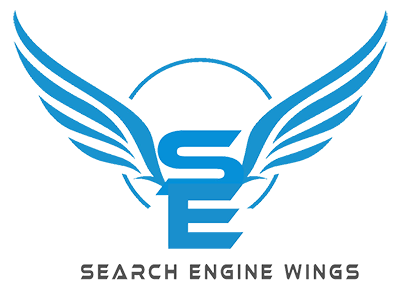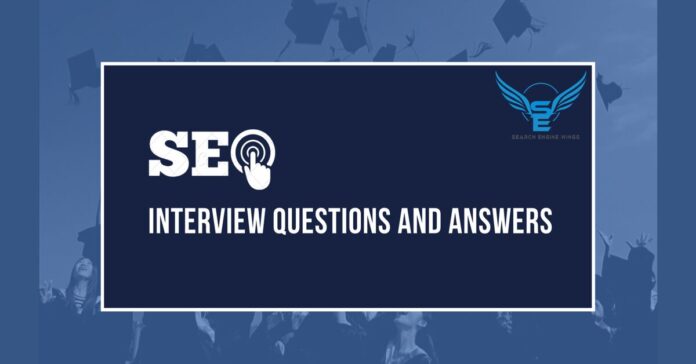Basic SEO Knowledge:
Question 1. What is SEO, and why is it important for websites?
Answer: Search engine optimization, or SEO, is the practice of optimizing websites, web pages, and content to increase their visibility in search engines like Google. The goal of SEO is to enhance the visibility, positioning, and usefulness of various forms of material in organic search results. They are all geared at increasing organic traffic.
Simply put, SEO is crucial because it increases the visibility of your website, resulting in increased traffic and the opportunity to convert visitors into paying clients.
Question 2. Differentiate between on-page and off-page SEO.
Answer: Everything you can do on a webpage (or internally) to raise your rankings falls under the category of on-page SEO.
Anything you can optimize outside of your site (or externally) to improve your rankings is considered off-page SEO. Possibly the most important off-page SEO aspect is backlinks. Public relations and social media are two more instances. Both are essential elements of an effective SEO strategy.
Question 3. What are keywords, and why are they significant in SEO?
Answer: Keywords are certain words or phrases that individuals who are part of your target audience use when searching online. Your website should appear as the first result when someone searches for that word or phrase. How you appear in the search results depends on using the appropriate keywords on your website or blog.
Question 4. Explain the concept of search engine indexing.
Answers: The process through which a search engine, like Google, organizes and stores internet content in a primary database (its index) is known as search engine indexing. Following an analysis and comprehension of the information, the search engine can present it to users in ranked lists on its Search Engine Results Pages (SERPs).
Question 5. What is the purpose of meta tags? Name a few common meta tags.
Answer: Use meta tags to provide additional information about your page and the contents to both search engines and site visitors. Meta tags comprise: The title of your page, which needs to be distinct for each page you publish, is what title tags refer to. A page’s content is described in the meta description.
Question 6. Define backlinks and their role in SEO.
Answer: Links pointing back to a page on your website from websites other than your own Because they reflect traffic flowing to your website from another website, backlinks are also known as inbound links. Google and Bing’s rankings depend on the quantity and quality of your backlink profile.
On-Page SEO:
Question 1. What are the key elements of on-page optimization?
Answer: On-Page SEO Elements
1. High-Quality Page Content.
2. Page Titles.
3. Headers.
4. Meta Descriptions.
5. Image Alt-text.
6. Structured Markup.
7. Page URLs.
8. Internal Linking.
Question 2. How do you optimize a web page’s title tag?
Answer: The following are some tips to optimize your website’s title tag:
1. Brand Your Title Tag
2. Enter Keywords Toward the Beginning
3. Use Key Phrases Wherever Possible
4. Use synonyms
5. Pipes
6. Use Numbers
7. Use Unique Page Titles
8. Include your Unique Selling Point in the Title
Question 3. Explain the importance of headings (H1, H2, etc.) in on-page SEO.
Answer: The design of the H1, H2, and H3 tags
Here is how Hn tags need to be applied: The H1 title is the most crucial part of any post or webpage, and keep that in mind. Sub-sections are arranged; using H2 and H3, and extra material with more significant specifics is meant to be provided in H4, H5, and H6.
Question 4. How can you optimize images for better SEO?
Answer: Image SEO:
1. Resize your images
2. Optimize image file names
3. Use alt tags
4. Make images mobile friendly
5. Optimize the image title
6. Include captions
7. Use unique images
8. Ensure text complements the images
9. Add image structured data
10. Use site maps
Question 5. What is a URL structure, and why is it important for SEO?
Answer: The human-readable language known as a URL was created to take the place of the numerical IP addresses that computers use to connect to servers. They also describe the website’s file organization. The components of a URL include a protocol, domain name, and path (which contains the particular subfolder structure of a page’s location).
Why are URLs significant for SEO?
URLs have three key advantages:
1. Improved user experience
2. Rankings
3. Links
Off-Page SEO:
Question 1. What are backlinks, and how do they influence a website’s ranking?
Answer: Links pointing back to a page on your website from websites other than your own Because they reflect traffic flowing to your website from another website, backlinks are also known as inbound links. The quantity and quality of your backlink profile affect both your ranking on Google and Bing.
Question 2. Mention some effective strategies to build high-quality backlinks.
Answer: Let’s start with the effective methods.
- Make Yourself Available to Journalists and Bloggers
- Publish “Skyscraper” Content
- Build Links From Outdated Resources
- Use content formats that have been shown to produce links.
- Publish Ultimate Guides
- Use Branded Strategies and Techniques
- Authority Resource Pages
First Bonus Technique: Convert Brand Mentions Into Quality Backlinks
Bonus Strategy #2: Send “Feeler” Emails
Question 3. What is domain authority, and how can it impact SEO efforts?
Answer: To estimate a website’s likelihood of ranking in SERPs, Moz created the Domain Authority (DA) score. Numerous variables, including the caliber and number of inbound connections, are taken into consideration. Moz’s domain authority scales from 1 to 100; the greater the score, the simpler it will be for the website to rank.
Question 4. Explain the concept of anchor text and its role in backlinks.
Answer: The anchor text is also known as the link label or link title. The words contained in the anchor text help determine the ranking that the page will receive from search engines such as Google Yahoo, and Bing.
Technical SEO:
Question 1. What is the significance of XML sitemaps?
Answer: Your website’s XML sitemap serves as a road map. Even though internal linking on the site is not a good idea, this directs Google to every page. In other words, the XML sitemap tells search engines which web pages to crawl. They improve communication between search engines and your website. Since they raise your SEO ranking, SEO professionals advise using them.
The value of XML Sitemap
1. Lists every URL on your website, including some that the search engines would not have discovered.
2. It helps Google understand your entire website structure.
3. Faster indexing in search engines.
4. Categorization of your content
5. Better reporting on your site
Question 2. How can you improve website loading speed for better SEO?
Answer: In 2023, these 11 practical suggestions can help your website load more quickly:
- Use lazy loading for advertisements
- Mobile website optimization and image optimization
- Make use of a content delivery network
- 404 error fixes
- Cut Down on Redirects
- HTML, JavaScript, and CSS minification
- Put browser caching in place
- Make use of a premium DNS service
- Cut Back on Third-Party Scripts
- Use Server-Side Header Bidding instead.
Question 3. Explain the importance of responsive design for mobile SEO.
Answer: You may use responsive design to assist you in solving several issues with your website. Your website will become mobile-friendly, look better on both large and small screens, and get more visitors who will stay on your site longer. Your search engine rankings may also rise as a result.
Question 4. What are canonical tags, and why are they used?
Answer: It is possible to inform search engines that a particular URL represents the master copy of a page by using a canonical tag (also known as a “rel canonical” element). By using- the canonical tag, issues brought on by identical or “duplicate” content appearing on various URLs are avoided.
Content and SEO:
Question 1. How can you create SEO-friendly content?
Answer: Guidelines And Resources For Creating SEO-Friendly Content
- Use headlines and sub-headers.
- Add links to previous content.
- Optimize the length of your article.
- Choose your keywords wisely.
- Optimize your images.
- Make the content shareable.
- Write high-quality content.
- Content optimization tools.
Question 2. Explain the concept of keyword density and its relevance.
Answer: The frequency with which a specific keyword occurs on a webpage about the overall number of words is known as keyword density. It’s often described- as a ratio or percentage; the higher the value, the more frequently your chosen keyword appears on your website.
Question 3. What is duplicate content, and why should it be avoided?
Answer: Duplicate content is online content that can be found at several URLs. Search engines are unable to determine which URL to rank higher in the search results because multiple URLs have the same content. Therefore, they can favor other websites and rank both URLs lower.
Analytics and Tools:
Question 1. What is Google Analytics, and how does it help in SEO analysis?
Answer: Google Analytics is a web analytics service that offers data and fundamental analytical capabilities for marketing and search engine optimization (SEO) needs. Anyone with a Google account can use the service for free, and it is a part of the Google Marketing Platform.
Question 2. Mention a few keyword research tools you’re familiar with.
Answer: Here are your top choices for keyword tools that provide much more than a list of focused keywords, so stop searching now.
1. SEMrush
2. Ahrefs Keyword Explorer
3. Ubersuggest
4. Google Keyword Planner
5. Moz Keyword Explorer
6. Google Trends
7. KWFinder
8. GrowthBar
Question 3. How can Google Search Console assist in SEO efforts?
Answer: As a person who focuses on internet marketing, Search Console will assist you in keeping track of the traffic to your website, improving your ranking, and deciding how to have your site appear in search results.
Algorithm and Updates:
Question 1. What is the Google algorithm, and why does it keep changing?
Answer: Google regularly tweaks its algorithm to enhance the caliber of search results. These upgrades frequently improve the interpretation of search queries and stop spam techniques. Content marketers should be alert as Google’s search algorithm is always changing.
Question 2. Can you name any major Google algorithm updates? How did they affect websites?
Answer: The “Panda Update,” a significant algorithm change to Google’s search engine ranking system, was implemented in 2011. Its goal was to penalize “thin” or low-quality web pages and reward informative, high-quality websites.
Local SEO:
Question 1. Explain the importance of local SEO for businesses.
Answer: Local SEO is an approach to search engine optimization (SEO) that makes your company appear more prominently in Google’s local search results. Local SEO may help any company with a physical location or provide services to a specific region.
Question 2. How can a business optimize its Google My Business listing?
Answer: The following are the components you should improve:
- Use the name of your actual company.
- Include a nearby phone number.
- Verify that your operating hours are accurate.
- Create an engaging description.
- Upload several high-quality pictures.
- If you have videos, upload them.
Ethics and Best Practices:
Question 1. What are “black hat” and “white hat” SEO techniques? Give examples of each.
Answer: Black hat SEO tactics include keyword stuffing, gateway, and cloaked pages, link farming, hidden texts and links, and spammy blog comments. White hat SEO strategies include investigation, analysis, rewriting meta tags to be more pertinent, improving content, and website makeovers.
One example is using structured data to add a five-star rating to one’s review on a false website to stand out on search result pages.
Giving incorrect details in structured data to trick users and search engines is known as the “Black Hat SEO” technique. One example is using structured data to add a five-star rating to one’s review on a false website to stand out on search result pages.
The usage of keywords and keyword analysis, backlinking, link building to increase the popularity of links, and producing material for human readers are some examples of white hat SEO strategies.






